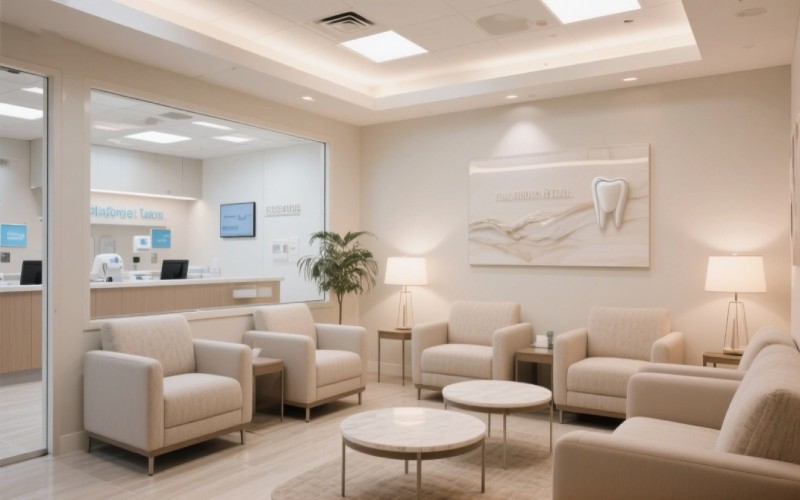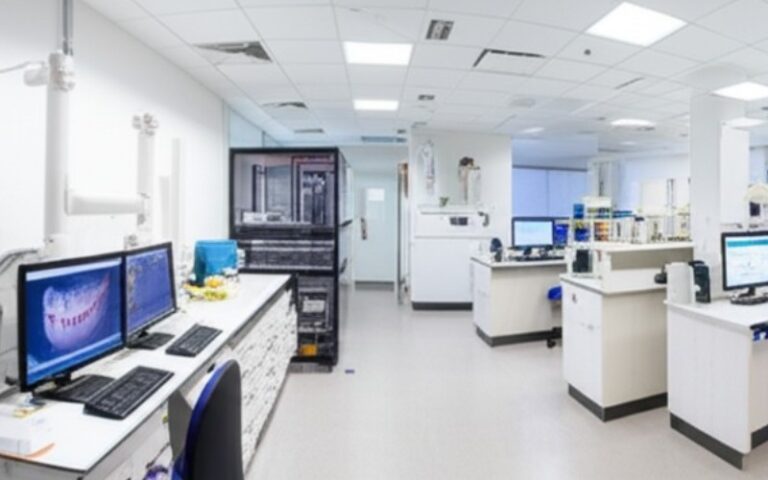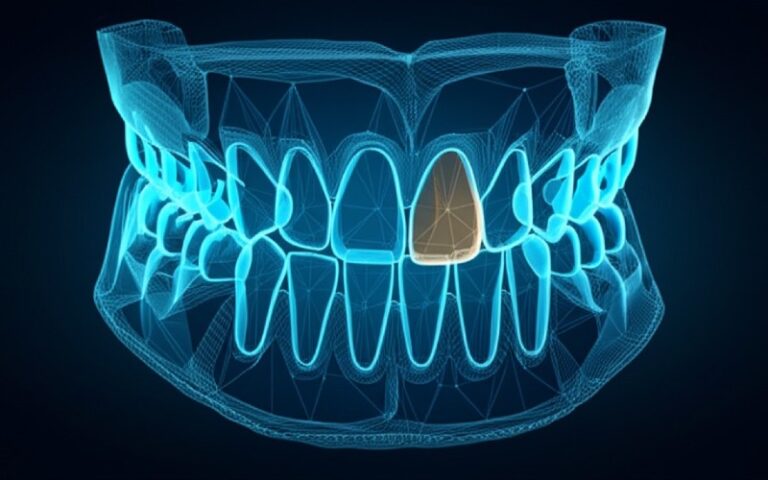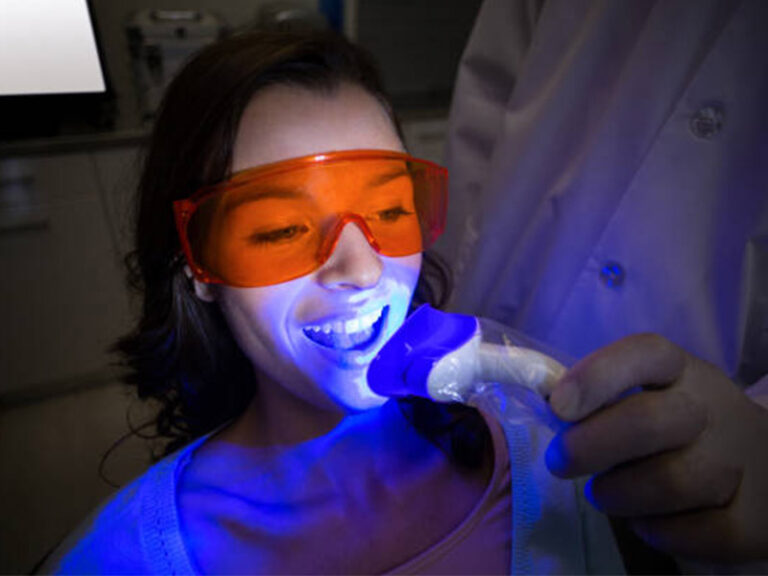
10 Tips to Improve Patient Experiences in Your Dental Office and Boost Patient Happiness
A better patient experience is no longer an extra in the tough dental field; it’s a basic need. For any practice owner, creating a place where patients feel important, comfortable, and heard is the best way to build loyalty, get positive word-of-mouth recommendations, and have lasting success. This article gives you a simple, easy-to-follow plan to improve the patient experience in your dental office. We will look at the main parts, from the first contact to after-care, offering useful tips to change a normal dental visit into a great one. Reading this is worth your time because doing these things can greatly improve how happy your patients are and make your dental practice stand out from the rest.
Table of Contents
How Can You Make a Powerful First Impression?
The patient’s experience starts long before they are in the dental chair. Your website is usually the first place they look, making it a very important part of their overall impression. Make sure your site is easy to use, simple to get around, and works well on phones. A potential new patient should be able to find key information, like services you offer, dentist information, and contact details, easily. Adding online scheduling not only makes things easier for the patient but also shows that your dental practice cares about their time.
The second a patient comes into your dental office, their experience keeps forming. A warm, real welcome from the front desk staff can quickly calm an anxious patient. Train your front office team to greet every patient with a smile and use their name. This starts the whole visit on a positive note. Clear signage is also a simple but good way to help a new patient find their way around your office, which makes them less confused and worried. This first meeting is your first and best chance to show a patient they are in a caring and professional place.
Is Your Waiting Room Working For or Against You?
The waiting room should feel like a part of the care and comfort you give in the treatment area. A cold, uncomfortable waiting area can make patient anxiety worse before the appointment even starts. To fix this, get comfortable seats in different styles. A mix of single chairs and small couches works for different people and helps patients feel more at home. The look of the room should be calming and friendly, using soft colors, nice lighting, and even natural things like plants to make a peaceful space.
Offering free extras is another great plan to make the waiting room experience better. Having free Wi-Fi is almost a must-have in today’s world, letting patients work or have fun while they wait. A simple drink station with water, coffee, and tea can also make a big and positive impression. These nice touches show patients that you have thought about their comfort in every way, turning a possibly stressful wait into a nice break.

Are You Effectively Minimizing Patient Wait Times?
Long wait times are a common reason patients get upset and a big problem for a positive experience. While delays can happen, having a plan can lessen their effect. Good scheduling is the first step. Using modern office software can help make the booking process smoother, make overbooking less likely, and give a clearer view of the day’s schedule. Putting extra time between appointments can also give you a buffer for surprise delays.
When you are running late, being open is important. Telling a waiting patient about a delay and giving them an idea of how long the wait will be shows you respect their time and can make them much less upset. The waiting area itself can also help make the wait feel shorter. Fun distractions like TVs, new magazines, or even screens with interesting information can keep a patient busy and make the wait seem to go by faster.
What Role Does Technology Play in the Patient Experience?
New dental technology is a great tool not just to get better clinical results, but also to really improve the patient experience. New things like digital x-rays and 3D scans give more exact information and are more comfortable for the patient than the old ways. Intraoral cameras are very good at getting the patient involved in their own care. By showing clear pictures on a screen, you can show them what treatment they need, which makes them understand better and helps build patient trust.
The use of technology goes beyond the examination room. Digital check-in on tablets or online forms sent before the visit can speed up the paperwork part of a visit, making the experience smoother and faster. Technology made to increase comfort, like noise-canceling headphones or virtual reality glasses, can also be a huge help for anxious patients. By using dental technology in a smart way, you can make procedures faster, improve communication, and show you are dedicated to giving the most modern and comfortable care.
How Can You Improve Dentist-Patient Communication?
Clear and kind communication is the foundation of a strong dentist-patient bond. Many patients come in a little worried, and how you talk to them can either ease or increase those fears. It begins with really listening—giving the patient your full attention and letting them share their worries without being cut off. When you explain a health issue or a procedure, it is very important to stay away from technical words and use simple, easy-to-understand language.
Pictures and other visual helpers are a great strategy to close any communication gaps. Using models, drawings, or pictures from an intraoral camera can help patients see what you are talking about. This helps them understand better and agree to the treatment. During the appointment, make it a point to explain what you are doing and why. Asking patients to ask questions during every part of the treatment process gives them power and shows them they are a partner in their own healthcare.
Are Your Soft Skills as Polished as Your Clinical Skills?
While your clinical skill is a must, it is often the soft skills of the dentist and their team that a patient remembers most. Being able to understand and share the feelings of another person is maybe the most important soft skill in healthcare. Recognizing and accepting a patient’s feelings, especially fear or pain, can do a lot to build trust and create a positive relationship. Being patient and having a calm, comforting manner are also key, especially when you are with an anxious patient.
These soft skills should be important for every person on your dental practice team. From the first phone call to make an appointment to the last talk at checkout, every contact adds to the total patient experience. Putting money into training for your staff on communication, understanding feelings, and patient-first care can have a big effect on how happy and loyal your patients are. In the end, patients remember how they were treated as a person just as much as they remember the quality of the clinical procedure.
How Can You Reduce Patient Anxiety During Treatment?
The treatment room is where patient worry can be at its highest, so it’s a very important place to focus on comfort and making them feel safe. The room itself should be designed to be as calming as you can make it. Soothing colors, soft music, and a clean, open space can help make it a more relaxed place. Before you start any procedure, take a moment to tell the patient each step so they know what’s coming. This easy act of communication can really lower the fear of the unknown.
Offering things that make a patient more comfortable during treatment can make a big difference for an anxious patient. This can be as easy as giving them a warm blanket or a pillow for their neck. Distraction methods are also very helpful. Offering noise-canceling headphones with music or TVs on the ceiling can help take the patient’s mind off the procedure. The aim is to create an experience where the patient feels safe, looked after, and in charge, which can change how they see dentistry.
What Is Your Strategy for a Seamless Appointment and Booking Process?
How easy and quick your appointment and booking process is has a direct effect on the patient experience. A scheduling system that is hard to use can be a source of early frustration. Giving patients several ways to book an appointment—like online, by phone, or in person—meets the needs of different patients and adds a level of convenience. An online booking system that shows open slots in real time is very helpful because it stops double-booking and lets patients find a time that fits their schedule without a lot of back-and-forth talk.
Automatic appointment reminders are another key part of a smooth scheduling plan. Sending reminders by text or email helps lower the number of missed appointments and gives patients an easy way to confirm their appointment information. The way to change an appointment should also be simple and easy. By making every office interaction as smooth as you can, you show that you respect your patient’s time and help create a good overall feeling about your dental clinic.

Why is Post-Treatment Follow-up a Critical Tip for Patient Loyalty?
The patient experience is not over when they walk out of your dental office. A nice follow-up after treatment is a great strategy for making patients loyal and building trust. A personal phone call the day after a big procedure to see how the patient is doing shows you really care and gives you a chance to answer any questions or worries they might have. This simple act can make a patient feel important and shows the caring side of your dental practice.
Follow-up contact is also a great tool to teach patients. You can give them after-care instructions and tips on how to care for their teeth by email or through a patient website. This continued contact helps patients feel supported while they get better and helps them take an active part in their own oral health. A regular follow-up system is a key thing that sets you apart, helps build lasting relationships with patients, and makes them want to stay with your practice.
How Can You Continuously Elevate the Patient Experience in Your Dental Practice?
Making the patient experience better is not a one-time thing but something you always work on. Asking for and listening to patient opinions is the best way to find places to improve. You can do this with surveys after their visit, online review sites, or by just making a place where patients feel okay sharing their thoughts right with your team.
Once you get this feedback, it is very important to do something with it. Having regular team meetings to talk about patient experiences and think of new ideas can help build a culture of always getting better in your dental practice. By always trying to improve every part of the patient’s journey, from the first hello to the last follow-up, you can build a name for great care that will bring in and keep patients for a long time.
In Summary: Key Takeaways for a Great Patient Experience
- Make a Strong First Impression: An easy-to-use website and a warm, personal hello are the first steps to a good patient experience.
- Create a Comfortable Environment: Change your waiting and treatment rooms into calm, friendly spaces with nice extras.
- Minimize Wait Times and Communicate Delays: Respect your patient’s time with good scheduling and open talk.
- Use Technology: Use new dental technology like intraoral cameras to improve communication, comfort, and clinical care.
- Focus on Clear Communication and Soft Skills: Talk with understanding, listen closely, and don’t use jargon to build patient trust.
- Reduce Patient Anxiety: Use distraction methods and comfort items to help worried patients feel calm during treatment.
- Make Office Tasks Easy: Offer easy online booking and automatic reminders to create a smooth appointment experience.
- Use a Thoughtful Follow-up Plan: A personal follow-up call after a procedure shows you care and helps build loyalty.
- Ask for and Use Patient Feedback: Always look for ways to get better by listening to what your patients tell you.




